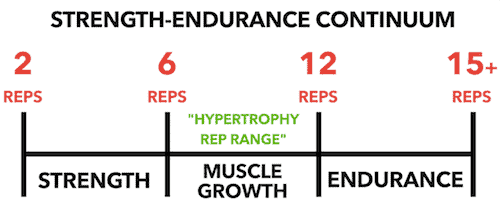Any athlete at the high school, college, or professional level will likely participate in some sort of strength and conditioning program. While that program is designed to improve athletic performance, naturally one would wonder if they will add muscle in the process. After all, who wouldn’t want to perform well but also look good at the same time? So, do strength and conditioning programs build muscle?
Although strength and conditioning programs are usually not designed to build muscle, in all likelihood an athlete will gain some lean muscle mass in the process. Strength training and hypertrophy (muscle building) training are not mutually exclusive things, there is much crossover between the two.
How Muscle is Built
The principles of muscle building are pretty straightforward, so there’s no need to turn this into an exercise physiology course. Muscle grows as an adaptation to a stimulus placed on it over time. This stimulus can come in the form of weights, resistance bands, machines, cables, body weight exercises, among many other things. As long as that particular stimulus is challenging enough, the body will respond by building new muscle.
Proper exercise form is an important component of building muscle. In order to grow muscle, there needs to be a certain level of mechanical tension on the muscle fibers. This is part of the stimulus mentioned previously that signals muscle growth. We’ve all seen the guy at the gym throwing weights around with horrible form. Typically, unless they have superior genetics, that person’s physique isn’t particularly impressive.
Ironically, that is a factor in why an athlete participating in a strength and conditioning program won’t put on maximum amounts of muscle. It isn’t that the individual is exercising haphazardly, it is that speed, force, velocity, and acceleration are usually main components of that particular program. For that reason, there may not be enough mechanical tension on the muscle to build it in optimal way. This is why an athlete may put on some muscle in the process, but not as much muscle as they possibly could under the conditions of a program design for hypertrophy.
How Most Strength and Conditioning Programs Work
Most strength and conditioning programs follow a simple rule of thumb. In the offseason, workouts are longer and contain greater volume. This is because athletes have more time to recover, since there are no games or practices to worry about. It is in this phase of the program that they will focus their attention on gaining strength or putting on weight. These things take time, so the off-season is perfect opportunity to do so.
During the season, workouts become shorter and more intense. It is at this time that you want to maintain your strength and cardiovascular performance without being sore or tired for the actual competition. As a result, the goal is to get your heart rate up without causing muscle damage that would lead to soreness or performance detriments the following day.
Programs vary tremendously among sports, since different sports have different goals. Anaerobic sports like football are more likely to produce muscle gains since the workouts accompanying that sport will be based on strength and high intensity plyometric activities. As mentioned earlier, strength and hypertrophy are not mutually exclusive things. Quite frankly, it’s hard to bench press a lot of weight and not have a large chest go along with it.
Sports that are long duration and aerobic like cross country, soccer, and cycling make it more challenging to build muscle. I talk about the effects cardio has on muscle gains in this article.
The Fallacy of the Rep Range Continuum
If you have an interest in exercise or muscle building, you may have seen a chart similar to the one below at some point in your life.

This chart basically states that different rep ranges produce different types of results. This is true to a certain extent. If you want to train specifically for strength, you should use heavy weights for low repetitions as the focal point of your program.
However, as more research comes about, we are starting to discover that the 8 to 12 rep range isn’t the only way to build muscle. The biggest factor, from a programming perspective, for building muscle is volume. Volume can be expressed in multiple ways, but the most common one is weight lifted X reps X sets. This of course is under the assumption that there is a reasonable amount of mechanical tension and proper form with each exercise. In other words, you can’t lift 5lb dumbbells over and over just to get a ton of volume in your workout.
But as you can see, this does not limit an individual to a fixed rep range to build muscle. Another factor in maintaining muscle growth is periodization. Periodization is simply structuring your workout program in a certain matter to ensure that you never plateau. This involves changing your rep ranges over time. Given these principles of periodization and total volume, you would have to train for strength and endurance at some point to build muscle over the long term.
Real World Examples
There are examples in just about every sport of athletes who are not only at the top of their game but also present a world-class physique. While many of them have incredible genetics, it does go to show that despite not training directly for muscle it is possible to put on muscle using a strength and conditioning program. Dwight Howard (basketball), Christian McCaffrey (football), Yoel Romero (MMA), Anthony Joshua (boxing), among countless others have shown this to be true. Even in aerobic sports, where I mentioned that it’s harder to build muscle, you’ll find guys like Rafael Nadal (tennis) and Adama Traore (soccer) that defy the standard.
So fear not if you are fortunate enough to be on the path to a college or professional career in athletics, a muscular physique may still await you.
